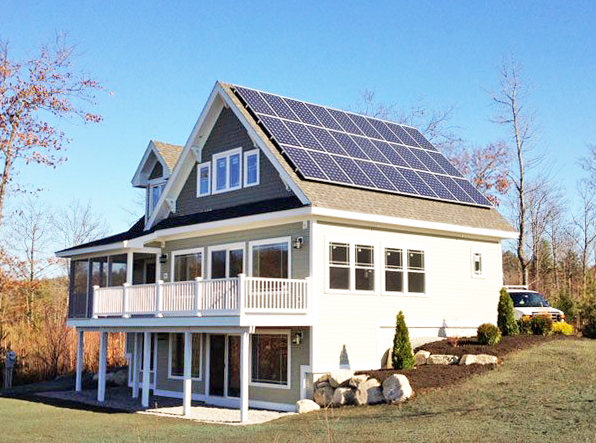
Welcome to the Green Thumb's Guide: Top 10 Organic Gardening Projects for Your Homestead.
In this informative and practical article, we will explore a range of solution-oriented projects aimed at helping you cultivate a thriving garden while embracing organic practices.
From composting and vermicomposting to crop rotation and permaculture principles, we will provide you with the tools and knowledge to create a sustainable and bountiful garden on your homestead.
Get ready to enhance your green thumb and enjoy the freedom of organic gardening.
Composting
Composting is an essential practice for any organic gardener, as it allows for the natural decomposition of organic materials to create nutrient-rich soil amendments. There are several composting methods that can be employed to achieve this goal.
One popular method is called 'hot composting,' which involves creating a pile of organic materials, such as food scraps, yard waste, and leaves, and regularly turning it to promote decomposition. Another method is 'vermicomposting,' where worms are used to break down organic matter into nutrient-rich castings.
The benefits of composting are numerous. Firstly, it reduces the amount of waste that goes to landfills, helping to minimize our impact on the environment. Additionally, composting enriches the soil with essential nutrients, improves soil structure, and increases its ability to retain moisture.

Vermicomposting
Vermicomposting, an effective method for organic gardeners, utilizes worms to break down organic matter into nutrient-rich castings, further enhancing the soil's fertility and structure. This method of worm farming is a great way to recycle kitchen scraps, yard waste, and other organic materials, while simultaneously enriching the soil in your garden.
Here are five practical tips to get started with vermicomposting:
- Choose the right worms: Red wigglers (Eisenia fetida) are the ideal worms for vermicomposting, as they are highly efficient in breaking down organic matter.
- Create a worm bin: Use a plastic or wooden container with good drainage and provide bedding material such as shredded newspaper or cardboard to create a cozy home for your worms.
- Feed your worms: Add a balanced mixture of kitchen scraps, such as fruit and vegetable peels, coffee grounds, and eggshells, to provide a varied diet for your worms.
- Maintain the right conditions: Keep the worm bin moist but not soggy, and ensure proper air circulation by regularly fluffing the bedding material.
- Harvest and use the castings: Once the worms have converted the organic matter into castings, harvest them and use them as a nutrient-rich soil amendment for your plants.
Crop Rotation
To ensure optimal soil health and prevent the buildup of pests and diseases, incorporating crop rotation into your organic gardening practices is essential.
Crop rotation is a sustainable farming technique that involves planting different crops in a specific sequence over several growing seasons. This practice helps to break the life cycle of pests and diseases, reduces soil nutrient depletion, and improves overall soil fertility.
By rotating crops, you can effectively manage weeds, pests, and diseases without relying heavily on chemical interventions. Additionally, different crops have varying nutrient requirements, so rotating them helps maintain a balanced nutrient profile in the soil.
When planning your crop rotation, consider grouping plants with similar nutrient needs together and alternating them with different plant families. This simple yet powerful technique can greatly enhance the productivity and sustainability of your homestead garden.
Companion Planting
Companion planting is a gardening technique that involves planting different species of plants together for their mutual benefit.

There are several benefits to companion planting, including natural pest control, improved soil fertility, and increased crop yields.
Benefits of Companionship
Promoting healthier plant growth and pest control, companion planting offers numerous benefits for organic gardeners. By strategically planting certain plants together, you can create a harmonious environment that maximizes the growth and health of your garden. Here are five key benefits of companion planting:
- Natural pest control: Some plants naturally repel pests, while others attract beneficial insects that prey on harmful pests. By interplanting these companion plants, you can naturally control pests without the need for chemical pesticides.
- Enhanced nutrient uptake: Certain plants have deep roots that help loosen the soil and bring up nutrients from deeper layers. By planting these deep-rooted plants alongside shallow-rooted ones, you can improve overall nutrient uptake in your garden.
- Improved pollination: Bees and other pollinators play a crucial role in plant reproduction. By planting companion plants that attract pollinators, you can ensure better pollination and increase your garden's productivity.
- Weed suppression: Some companion plants act as natural weed suppressors by shading the soil and preventing weed growth. Interplanting these plants with your main crops can significantly reduce the need for manual weeding.
- Companion animals and mental health: Having companion animals in your garden, such as chickens or goats, not only provides companionship but also offers mental health benefits. Spending time with animals can reduce stress and create a sense of calm and well-being.
Companion planting is a practical and effective way to create a thriving organic garden. By harnessing the power of plant relationships, you can enjoy healthier plants, natural pest control, and a more sustainable approach to gardening.
Pest Control Strategies
One effective strategy for organic pest control in gardening is implementing companion planting techniques. Companion planting involves growing certain plants together to deter pests, attract beneficial insects, and promote overall plant health. This integrated pest management approach relies on the natural relationships between plants to create a balanced ecosystem in your garden.
Certain plants have natural abilities to repel pests or attract predators that feed on pests. For example, marigolds emit a scent that repels many insects, while attracting beneficial insects like ladybugs and lacewings that feed on pests. Planting garlic or chives near roses can deter aphids, and planting dill or fennel can attract beneficial wasps that prey on caterpillars.
Ideal Plant Combinations
Implementing ideal plant combinations is key to successful companion planting in your organic garden. By choosing the right plants to grow together, you can create a harmonious environment that benefits all the plants involved.
Here are five ideal plant combinations that offer various benefits of companionship:

- Tomatoes and basil: Planting basil near tomatoes can help repel pests and improve the flavor of the tomatoes.
- Marigolds and vegetables: Marigolds attract beneficial insects that feed on pests, providing natural pest control for your vegetables.
- Carrots and onions: Planting onions alongside carrots can help deter carrot flies and improve the overall health of both plants.
- Cucumbers and sunflowers: Sunflowers provide shade and support for cucumbers, while cucumbers help keep the soil cool and moist for sunflowers.
- Beans and corn: Planting beans near corn can provide natural nitrogen fixation, enriching the soil and improving the growth of both plants.
Organic Pest Control
The homestead's organic pest control methods effectively protect the garden from harmful insects and critters. When it comes to maintaining an organic garden, it is important to prioritize natural remedies and organic pesticides. These alternatives are not only safer for the environment but also promote the health and vitality of your plants.
One effective natural remedy is using companion planting, where certain plants are grown together to repel pests. For example, planting marigolds alongside vegetables can deter aphids and nematodes.
Another option is making homemade organic pesticides, such as a mixture of water, soap, and garlic, which can be sprayed on plants to control pests. Additionally, introducing beneficial insects like ladybugs and lacewings can help keep pest populations in check.
Native Plant Gardening
To further enhance the sustainability and biodiversity of your garden, consider incorporating native plants into your landscape design. Native plants are species that naturally occur in a particular region and have adapted to the local climate and soil conditions. By including these plants in your garden, you can create a habitat that supports local wildlife, conserves water, and reduces the need for fertilizers and pesticides.
Here are five ways you can incorporate native plants into your garden:
- Use native plants for erosion control and slope stabilization.
- Create a native wildflower meadow to attract pollinators and beneficial insects.
- Establish a native plant rain garden to absorb and filter rainwater runoff.
- Plant native shrubs and trees to provide food and shelter for birds and other wildlife.
- Practice native plant propagation by collecting seeds or taking cuttings from existing native plants and growing them in your garden.
Permaculture Principles
Permaculture principles encompass sustainable landscaping techniques and regenerative agriculture practices. These principles are designed to create self-sustaining ecosystems that work in harmony with nature, minimizing waste and maximizing efficiency.
Sustainable Landscaping Techniques
Sustainable landscaping techniques are essential for creating a resilient and eco-friendly homestead. By implementing these techniques, you can minimize your ecological footprint while maintaining a beautiful landscape.

Here are five sustainable landscaping practices to consider:
- Rainwater harvesting: Capture rainwater in barrels or cisterns to use for irrigation, reducing the need for municipal water and conserving resources.
- Drip irrigation: Opt for drip irrigation systems instead of traditional sprinklers to minimize water waste and deliver water directly to plant roots.
- Native plants: Choose native plants that are adapted to your region's climate and require less water and maintenance.
- Mulching: Apply organic mulch around plants to retain moisture, suppress weeds, and improve soil health.
- Permeable paving: Use permeable materials for driveways and walkways to allow rainwater to soak into the ground, preventing runoff and replenishing groundwater.
Regenerative Agriculture Practices
Implementing regenerative agriculture practices is an effective way to further enhance the sustainability and productivity of your homestead.
Regenerative agriculture practices focus on restoring and improving the health of the soil, promoting biodiversity, and reducing reliance on external inputs.
These sustainable farming methods, rooted in permaculture principles, offer a holistic approach to land management that benefits both the environment and the farmer.
By implementing techniques such as cover cropping, crop rotation, and agroforestry, you can regenerate the soil, increase water retention, and minimize erosion.
Additionally, integrating animals into the farming system through rotational grazing can enhance soil fertility and nutrient cycling.
Regenerative agriculture practices not only contribute to the health and resilience of your homestead but also have a positive impact on the larger ecosystem, making them a valuable investment for the future.

Raised Bed Gardening
One popular method of organic gardening is utilizing raised bed gardening. Raised bed gardening involves creating a garden bed that is elevated from the ground, typically in the form of a rectangular or square box. This method offers several benefits, including improved soil drainage, reduced weed growth, and better control over soil quality.
Here are five key aspects to consider when implementing raised bed gardening:
- Soil preparation: Before starting your raised bed garden, it's important to prepare the soil by removing any existing vegetation and loosening it with a garden fork or tiller. You can then amend the soil with organic matter such as compost or aged manure to improve its fertility.
- Irrigation methods: Raised beds require regular watering to keep the plants healthy. Consider using drip irrigation or soaker hoses to deliver water directly to the plant roots, minimizing water waste and promoting efficient absorption.
- Plant spacing: When planning your raised bed garden, take into account the mature size of the plants and provide adequate spacing between them to ensure proper air circulation and prevent overcrowding.
- Pest control: Raised beds can help deter some pests, but it's still important to monitor for signs of infestation and take appropriate measures to control pests organically, such as using companion planting or natural repellents.
- Mulching: Applying a layer of organic mulch, such as straw or wood chips, around the plants in your raised bed garden can help conserve moisture, suppress weed growth, and enhance soil fertility.
Homemade Fertilizers
Creating homemade fertilizers is an effective way to nourish your plants and promote their growth in an organic and sustainable manner. By using simple ingredients found around your homestead, you can provide essential nutrients to your plants without relying on synthetic chemicals.
One popular homemade fertilizer is compost tea, which is made by steeping compost in water and then using the nutrient-rich liquid to water your plants.
Another option is to make a homemade liquid fertilizer using ingredients like seaweed, fish emulsion, or even coffee grounds. These natural fertilizers not only provide essential nutrients but also help improve soil health and increase microbial activity.
Additionally, homemade fertilizers can be combined with homemade insecticides and natural weed control methods to create a holistic approach to gardening that is safe for both you and the environment.
Cover Crops
Cover crops are an essential component of organic gardening, offering numerous benefits to the soil and overall garden health. By planting cover crops, you can improve soil fertility, prevent erosion, suppress weeds, and even attract beneficial insects.

Some of the best cover crop choices include legumes like clover and vetch, as well as grasses like rye and oats.
Benefits of Cover Crops
The benefits derived from incorporating cover crops into your homestead garden are numerous and significant. Cover crops are plants that are grown primarily to improve soil health and protect it from erosion.
Here are five key benefits of using cover crops:
- Improving Soil Fertility: Cover crops add organic matter to the soil, increasing its nutrient content and improving its structure.
- Preventing Soil Erosion: The extensive root systems of cover crops help bind the soil together, preventing erosion caused by wind and water.
- Weed Suppression: Cover crops compete with weeds for resources, reducing weed growth and the need for herbicides.
- Pest Management: Some cover crops attract beneficial insects that prey on garden pests, reducing the need for chemical pesticides.
- Increasing Biodiversity: The presence of diverse cover crops promotes a healthier ecosystem, attracting beneficial insects, birds, and other wildlife.
Best Cover Crop Choices
One of the most important decisions for a successful organic garden is selecting the optimal cover crop choices. Cover crops offer numerous benefits, such as improving soil fertility, reducing erosion, suppressing weeds, and attracting beneficial insects.
When choosing cover crops, it is essential to consider your specific gardening goals and the climate in your region. Legumes, such as clover and vetch, are excellent choices for fixing nitrogen in the soil. Grasses like cereal rye and oats are ideal for adding biomass and organic matter to the soil. For weed suppression, consider using buckwheat or winter rye. To attract pollinators and beneficial insects, choose cover crops like phacelia or crimson clover.
Additionally, it is crucial to rotate cover crops each season to prevent the buildup of pests and diseases. By carefully selecting cover crops, you can enhance the health and productivity of your organic garden.
Frequently Asked Questions
How Do I Deal With Common Garden Pests Like Aphids and Slugs Without Using Harmful Chemicals?
When dealing with common garden pests like aphids and slugs, it is possible to employ natural remedies and organic pest control methods, avoiding the use of harmful chemicals. These alternatives can effectively address the issue without compromising the freedom of a chemical-free garden.

What Are Some Easy and Affordable Ways to Create Raised Beds in My Garden?
Creating raised beds in your garden can be achieved through various creative alternatives that are both easy and affordable. Budget-friendly options such as using recycled materials or repurposing existing structures can provide practical solutions for those seeking freedom in their gardening endeavors.
Can I Use Kitchen Scraps Like Coffee Grounds and Eggshells for Composting?
Yes, kitchen scraps like coffee grounds and eggshells can be used for composting. They are valuable additions to a compost pile, providing essential nutrients and aiding in decomposition. Here are some tips for successful composting with these kitchen scraps.
How Do I Attract Beneficial Insects Like Ladybugs and Bees to My Garden?
To attract beneficial insects like ladybugs and bees to your garden, create a bee and ladybug friendly environment by incorporating a variety of flowering plants, providing water sources, and avoiding the use of pesticides. Designing a garden that attracts pollinators is essential for a thriving ecosystem.
Are There Any Specific Native Plants That Are Particularly Beneficial for Attracting Pollinators to the Garden?
Native plants play a crucial role in attracting pollinators to the garden. By incorporating a diverse range of native plant species, gardeners can create a biodiverse environment that supports and nourishes pollinators, ensuring the health and productivity of their gardens.
 Family Craft ProjectsHome ImprovementCooking and BakingReuse and RecycleDIY GiftsEco-Friendly ProjectsDIY Home SolutionsSeasonal ActivitiesFun and GamesLearn TogetherPrivacy PolicyTerms And Conditions
Family Craft ProjectsHome ImprovementCooking and BakingReuse and RecycleDIY GiftsEco-Friendly ProjectsDIY Home SolutionsSeasonal ActivitiesFun and GamesLearn TogetherPrivacy PolicyTerms And Conditions

 Family Craft ProjectsHome ImprovementCooking and BakingReuse and RecycleDIY GiftsEco-Friendly ProjectsDIY Home SolutionsSeasonal ActivitiesFun and GamesLearn TogetherPrivacy PolicyTerms And Conditions
Family Craft ProjectsHome ImprovementCooking and BakingReuse and RecycleDIY GiftsEco-Friendly ProjectsDIY Home SolutionsSeasonal ActivitiesFun and GamesLearn TogetherPrivacy PolicyTerms And Conditions
